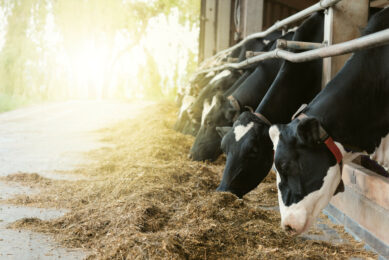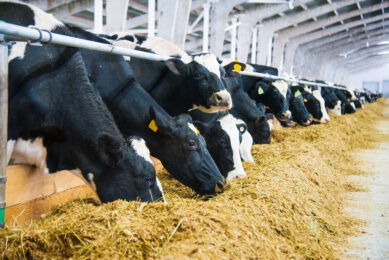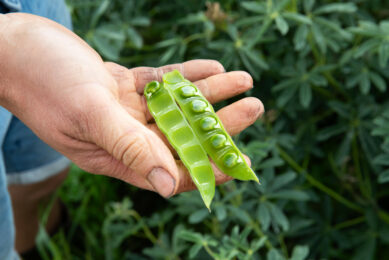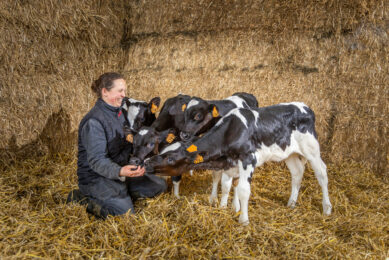Exploring the benefits of perennial legumes in milk production
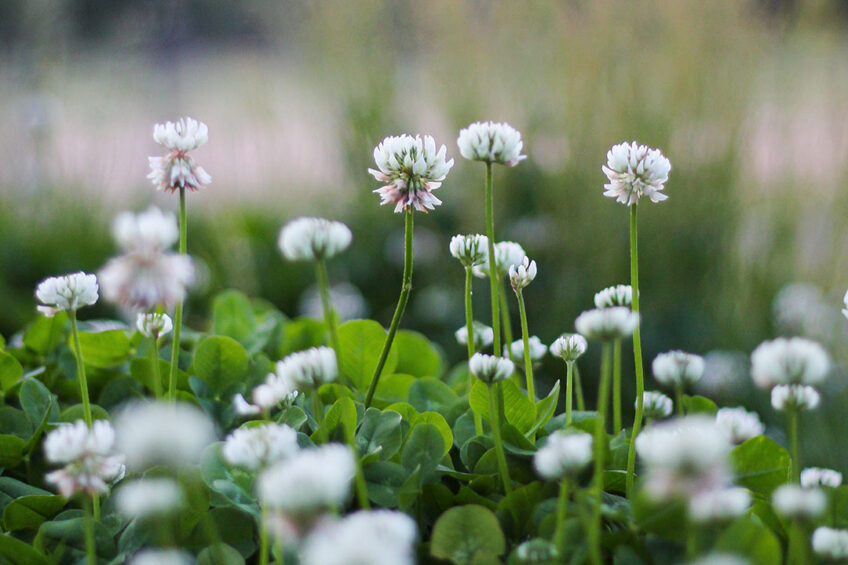
The perennial legumes lucerne, red clover and white clover tend to increase nutritive value and milk production response of grass-based diets. That is an outcome of research by the 3030 Project, an initiative of Dairy Australia.
One of the aims of the project was to explore forage alternatives to complement perennial ryegrass production on dairy farms in southern Australia. The 3030 project aims to help farmers achieve a 30% improvement in farm profit by increasing consumption of home-grown forage by 30% (pasture plus crop).

High temperatures affect perennial ryegrass growth
Dairy Australia emphasises that soil moisture and higher temperatures in the Australian summer not only cause a decline in the growth of perennial ryegrass but also reduce its nutritional value. Perennial legumes such as red clover and lucerne are more adapted to grow under drought conditions than most perennial grasses, says Dairy Australia. The nutritional value of these species is less affected in summer than perennial ryegrass.
Nutritional value of perennial ryegrass vs perennial legumes
The research found quite a few benefits of feeding legumes compared to pure grass-based diets. The milk and milk solids production increase and methane emissions are reduced. Nitrogen is used more efficiently. These responses are usually due to the higher dry matter intake of cows fed legumes and the higher nutritional value of the legumes.
Mixing grass seeds for maximum forage intake
Cows can be quite fussy eaters, and farmers need to ensure they make the right choices when picking grass seed varieties and mixes. Read more…
Potential to reach water deep in soil profile
Deep-rooted perennial legumes such as red clover and lucerne can respond very well to summer rainfall in Australia and also have the potential to reach water deep in the soil profile. These species are able to keep growing when most pasture species, and perennial ryegrass in particular, are already under water stress and have stopped growing.
Monoculture
Lucerne is usually grown as a monoculture, according to Dairy Australia. It has been sown with species like red clover and chicory, but they do not complement each other since they all grow predominantly in late spring and summer.
On most Australian dairy farms, lucerne is harvested for hay or silage on outblocks. However, it has been proven in northern Victoria that, with the right management in place, this species can be grazed all year round.
Sowing lucerne
Most specialists advise a soil test before sowing lucerne. This species does not tolerate acid soils with high aluminium. Lucerne does not do well when sown too deep. The seed should be covered by 1–2cm of soil. Using a roller after sowing helps to get good seed–soil contact on lighter soils.
For higher rainfall southern regions, spring sowing of lucerne can be successful. In low-to-medium rainfall regions, where most annual rainfall occurs in winter, autumn sowing is recommended.
How to deal with low grass yields for dairy cows
The different climates have had a detrimental effect on grass growing rates forcing dairy farmers to think fast to make compensatory arrangements. Read more…
Weed control
Weed control through spraying of glyphosate is recommended to achieve a knockdown. For autumn sowing lucerne, another option is spray topping in the previous spring to reduce seed set of annual weeds before the autumn.

Disease resistance
AusWest Seeds points out that most lucerne diseases are infectious and are caused by living organisms such as bacteria, fungi, nematodes and mycoplasma-type organisms. They penetrate plant tissue by piercing the outer membrane of the plant. “Choosing new varieties that offer better disease resistance will help in prevention of these diseases occurring and therefore increases overall yields and persistence of your lucerne stand,” AusWest Seeds says.
Impact of slugs
In recent years, slugs have also been causing problems with lucerne. They have been decimating newly sown pastures, crops and lucerne. Factors that promote the build-up of slug populations are heavy soil types, summer rains and reduced tillage. AusWest Seeds advises to inspect potential paddocks prior to sowing. If slugs are found, farmers can contact their local agronomist for control.
Red clover increases soil fertility
Red clover is similar to lucerne in terms of summer production, adaptability to grazing conditions and high nutritive value all year round. A great advantage of red clover is nitrogen fixation. Even if farmers are not using red clover for pasture, red clover can be useful for increasing soil fertility for future crops. Most clovers retain moisture, and weeds do not get a good chance to grow.
Red clover is quite drought-resistant but gives best results in temperate areas with an annual rainfall of about 700mm. In areas with dry summers, the legume will grow best if it is irrigated over summer. Summer is its best growing season and it needs the rainfall or irrigation to grow to its full potential.

Seeding and blended pasture
The best time to plant red clover is autumn or spring. It helps to give a good soaking when sown. One kilogramme of seeds per acre (0.4ha) is advised to start a crop. Red clover grows well with other temperate pasture grasses such as ryegrass, so it is suitable for an effective blended pasture.
Red clover should be planted into a well-prepared, firm seedbed, up to 6.5mm deep. The soil pH is advised to be above 6. Nitrogen fixation and nodulation will be suppressed at a lower pH. In that case fertiliser would need to be supplied.
There are some challenges with seeding red clover. It does not handle heat very well and needs rainfall or irrigation throughout the year. That makes the plant less suitable for Western Australia, Queensland and the Northern Territory. In Australia the best state to use it in is South Australia.
Red clover can also struggle in alkaline soils. And planted as a standalone crop, red clover can occasionally cause animals to bloat, especially when it is used as hay. Most farmers combine their red clover with a grass.
According to Dairy Australia, white clover is usually sown in mixtures with perennial ryegrass. It has historically been part of the predominant pastures of most dairying areas of southern Victoria. This mix has strong spring growth and low productivity throughout the summer in dry land conditions.
Regenerate from seeds
Because of its shallow root system, white clover suffers in summer drought conditions as it normally cannot reach enough moisture to provide consistent enough production to complement perennial ryegrass. However, even after severe droughts, white clover has the capacity to reappear from seeds on the ground and contribute to increase the nutritive value of grass-based pastures.
As soon as a spring or summer has good moisture in the upper layers of the soil, white clover is able to regenerate from seeds and quickly proliferate with its stolons, Dairy Australia points out. Summer grazing is critical for white clover to be able to persist through this strategy. But overgrazing should be avoided during summer in order to keep the stolons intact and, hence, the regrowth capacity of this legume.
White clover is best planted in a dryland area in mid-autumn to early winter in moist conditions. In an irrigated or tablelands area, white clover can be planted in spring. Specialists advise a seed mix needed of 1–2kg per hectare if used in a mix. Southern areas of Australia with reasonable rainfall are the locations that will see the most successful white clover crops.
Join 13,000+ subscribers
Subscribe to our newsletter to stay updated about all the need-to-know content in the dairy sector, two times a week.



